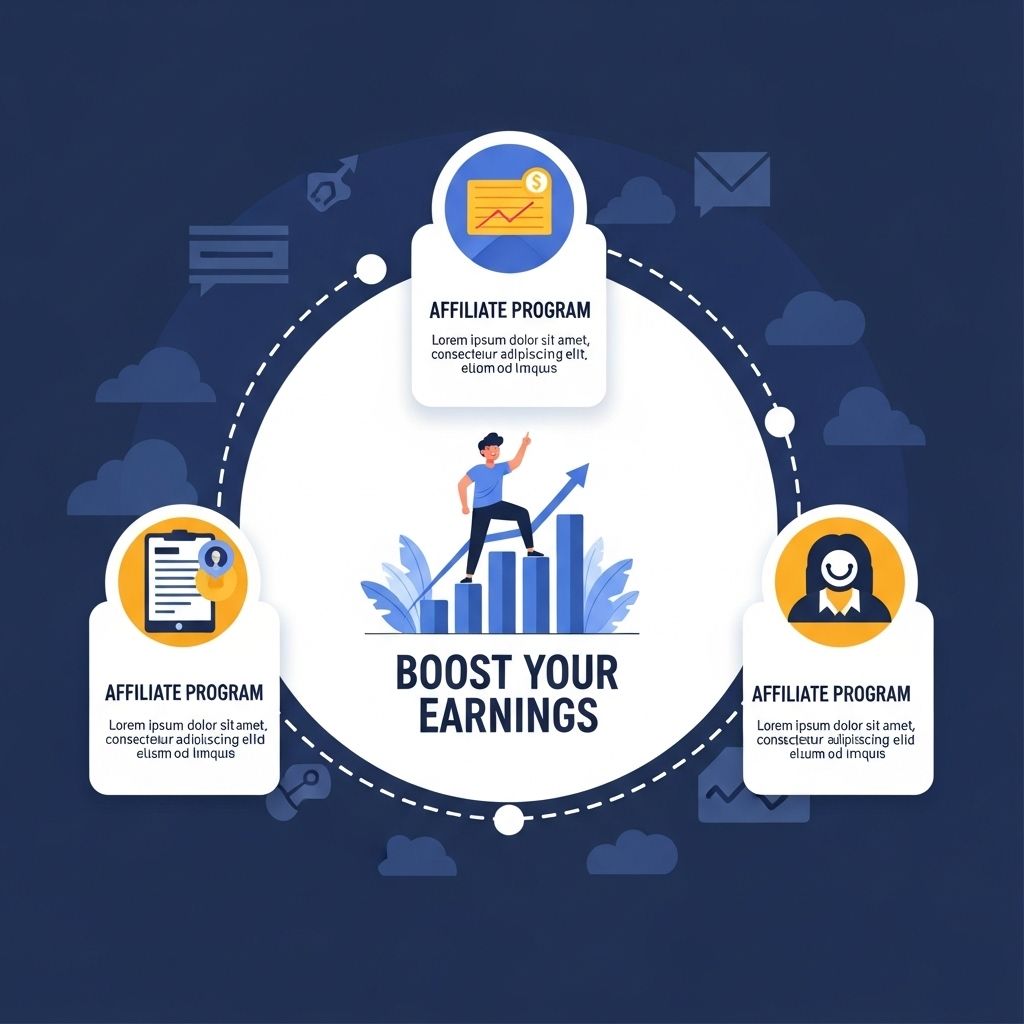In today’s digital age, the opportunity to earn passive income has never been more accessible, particularly through affiliate marketing programs. These programs allow individuals to promote products or services from other companies and earn a commission for every sale or action generated through their unique referral links. This article delves into the nuances of affiliate programs, providing insights on how to maximize earnings, strategies for success, and the best platforms to get started.
Understanding Affiliate Marketing
Affiliate marketing involves three main players: the merchant (business owner), the affiliate (marketer), and the consumer. The process is straightforward: affiliates promote products via various platforms (blogs, social media, etc.) and receive a commission when a consumer makes a purchase using their referral link.
The Affiliate Marketing Ecosystem
The ecosystem can be broken down into key components:
- Affiliates: Individuals or businesses that promote products.
- Merchants: Companies that sell products and provide affiliate programs.
- Consumers: End-users who purchase through affiliate links.
- Affiliate Networks: Platforms that connect affiliates with merchants, managing the logistics and payment processes.
Choosing the Right Affiliate Program
Not all affiliate programs are created equal. When selecting an affiliate program, consider the following:
Key Criteria for Selection
- Commission Rates: Higher commissions can significantly increase potential earnings.
- Product Relevance: Ensure the products align with your audience’s interests.
- Reputation of the Merchant: Partner with reputable companies to build trust with your audience.
- Support and Resources: Look for programs that provide affiliates with marketing materials and support.
Strategies to Maximize Earnings
Once you’ve chosen an affiliate program, the next step is to implement strategies that enhance your earning potential. Here are some effective techniques:
1. Content Marketing
Creating high-quality, relevant content is essential for driving traffic and conversions. Consider the following content types:
- Blog Posts: Write product reviews, comparisons, and how-to guides.
- Video Content: Share product demonstrations and unboxings on platforms like YouTube.
- Social Media Posts: Utilize platforms like Instagram and Facebook to share affiliate links in engaging ways.
2. SEO Optimization
Optimizing your content for search engines can drive organic traffic to your affiliate links. Key SEO practices include:
- Keyword Research: Identify and incorporate relevant keywords into your content.
- On-page SEO: Utilize proper headings, meta tags, and alt text for images.
- Backlinking: Engage in link-building strategies to improve domain authority.
3. Email Marketing
Building an email list allows you to promote products directly to engaged users. Tips for effective email marketing include:
- Segment Your Audience: Tailor your messages based on user behavior and preferences.
- Provide Value: Include useful content along with affiliate promotions to prevent coming off as overly sales-oriented.
- A/B Testing: Experiment with different subject lines and content styles to optimize engagement.
Analyzing Performance
Tracking the performance of your affiliate links is crucial for understanding what works and what doesn’t. Utilize the following metrics:
Essential Performance Metrics
| Metric | Description |
|---|---|
| Click-Through Rate (CTR) | The percentage of people who clicked on your affiliate link compared to those who viewed it. |
| Conversion Rate | The percentage of users who made a purchase after clicking on your link. |
| Earnings Per Click (EPC) | Average earnings generated per click on your affiliate link. |
By regularly evaluating these metrics, you can fine-tune your strategies for better results.
Top Affiliate Platforms to Consider
There are numerous affiliate platforms available, each catering to different niches and audiences. Here are some of the most reputable ones:
1. Amazon Associates
As one of the largest affiliate programs globally, Amazon Associates allows you to promote millions of products. The program is user-friendly and suitable for beginners.
2. ShareASale
ShareASale offers a broad range of products across different categories. It provides affiliates with extensive reporting tools to track performance.
3. CJ Affiliate
CJ Affiliate is known for its high-quality partnerships and advanced tracking capabilities, making it a great choice for experienced marketers.
4. ClickBank
ClickBank specializes in digital products, offering high commission rates and a straightforward signup process.
Building a Sustainable Business
To truly succeed in affiliate marketing, it’s essential to view it as a long-term business rather than a quick cash scheme. Focus on the following:
- Developing a Strong Brand: Build trust with your audience through transparency and authenticity.
- Continuous Learning: Stay updated on industry trends and adapt your strategies accordingly.
- Diversifying Income Streams: Consider promoting multiple products or joining different affiliate programs to reduce reliance on one source.
Conclusion
Affiliate marketing presents a viable path to boosting your earnings, but success requires dedication, strategy, and continuous improvement. By understanding the ecosystem, choosing the right programs, employing effective strategies, and analyzing your performance, you can create a sustainable and profitable affiliate marketing business. Start your journey today and unlock the potential of earning passive income through affiliate programs.
FAQ
What are affiliate programs?
Affiliate programs are marketing arrangements where businesses reward affiliates for driving traffic or sales to their products through the affiliate’s marketing efforts.
How can I start with affiliate marketing?
To start with affiliate marketing, choose a niche, research affiliate programs that align with your interests, sign up for those programs, and begin promoting their products through your website, blog, or social media.
What types of affiliate programs are available?
There are various types of affiliate programs, including pay-per-click (PPC), pay-per-sale (PPS), and pay-per-lead (PPL), each offering different commission structures.
How much can I earn with affiliate marketing?
Earnings in affiliate marketing can vary widely based on factors like niche, audience size, and marketing strategies, with some affiliates earning a few dollars a month to others making six or seven figures annually.
Do I need a website to succeed in affiliate marketing?
While having a website can enhance your affiliate marketing efforts, it is not strictly necessary; you can also promote affiliate products through social media, email marketing, or video content.
What are the best practices for affiliate marketing?
Best practices for affiliate marketing include choosing quality products, disclosing your affiliate relationships, providing valuable content to your audience, and regularly analyzing your performance metrics.




